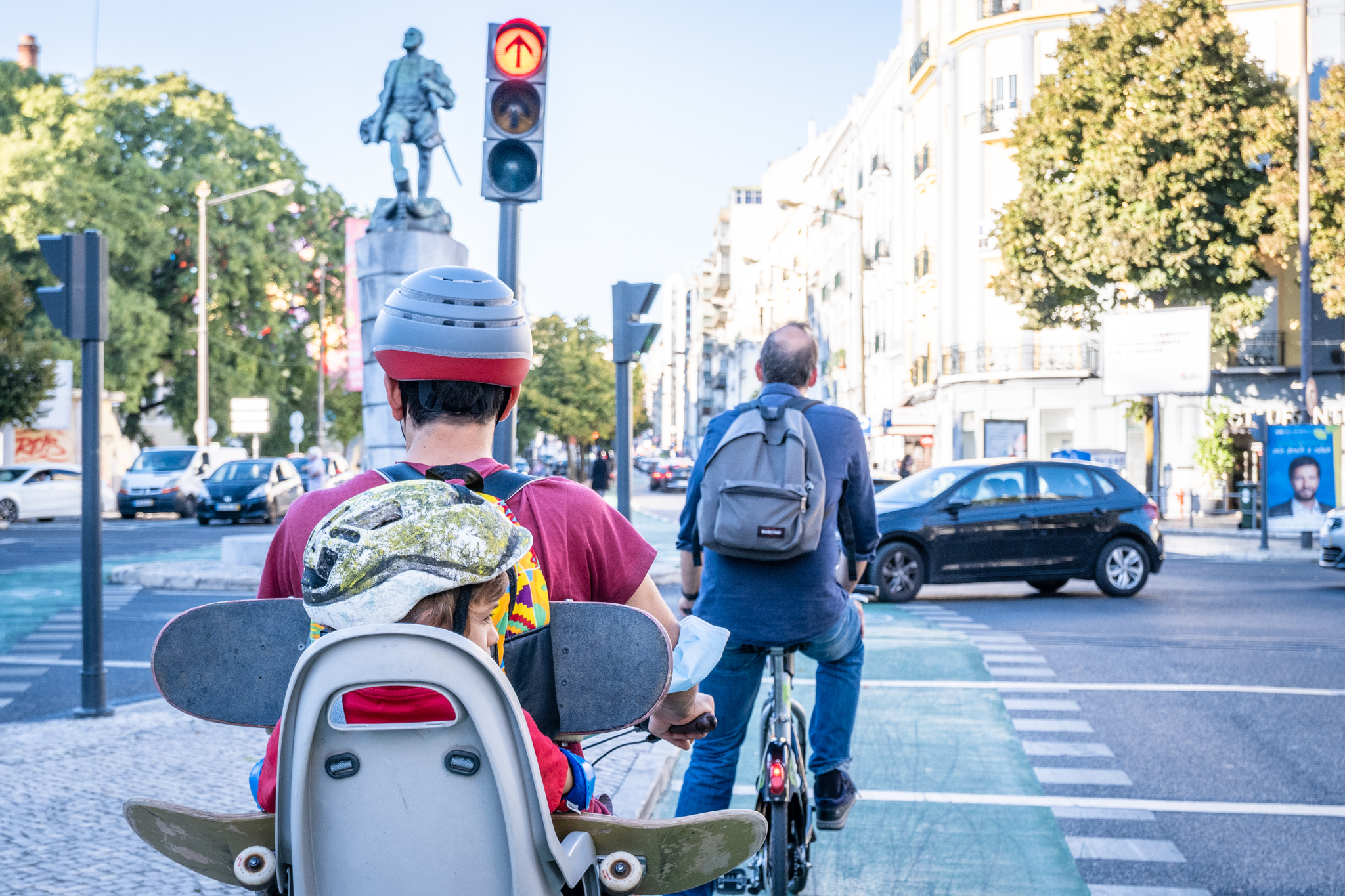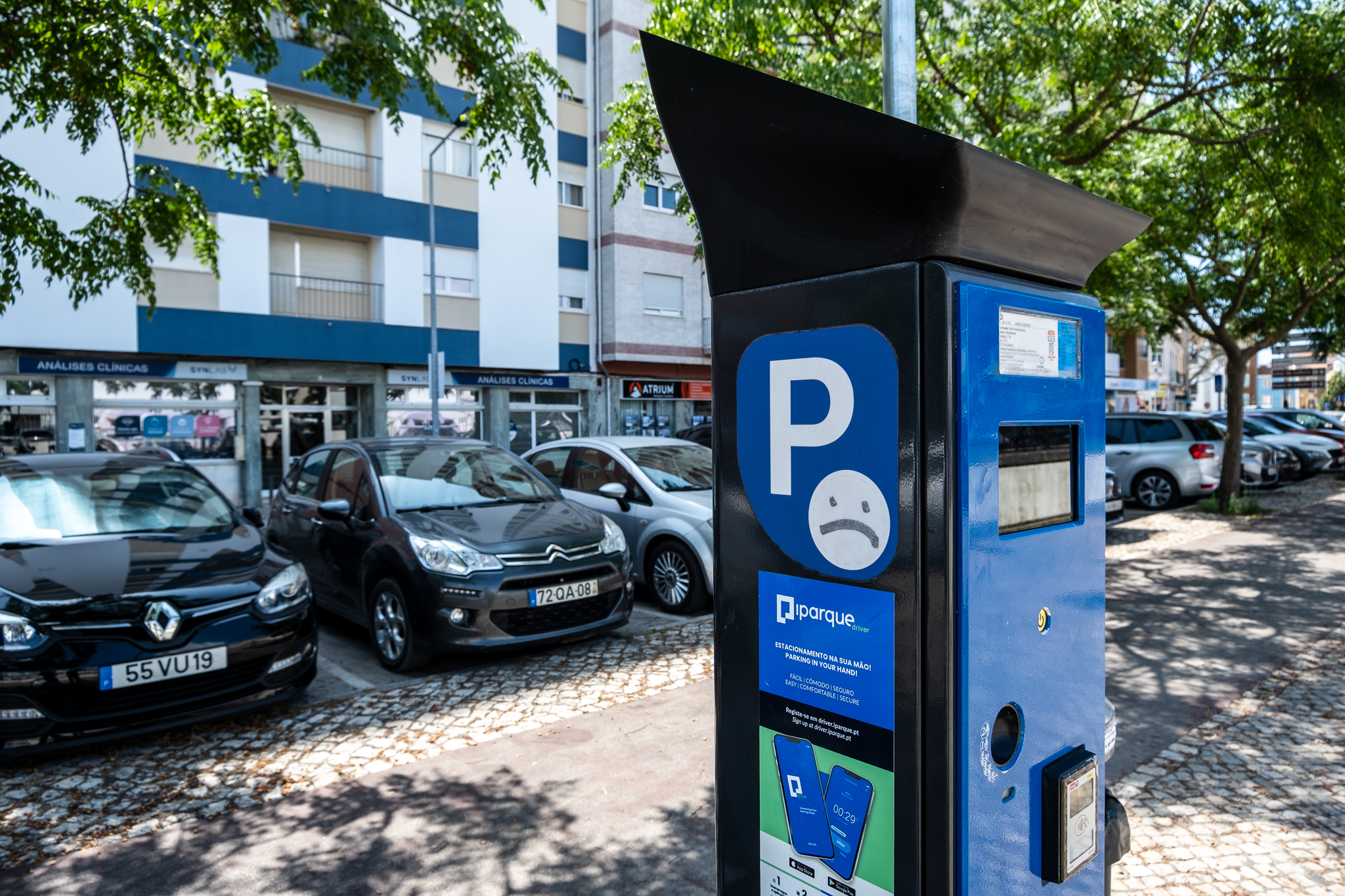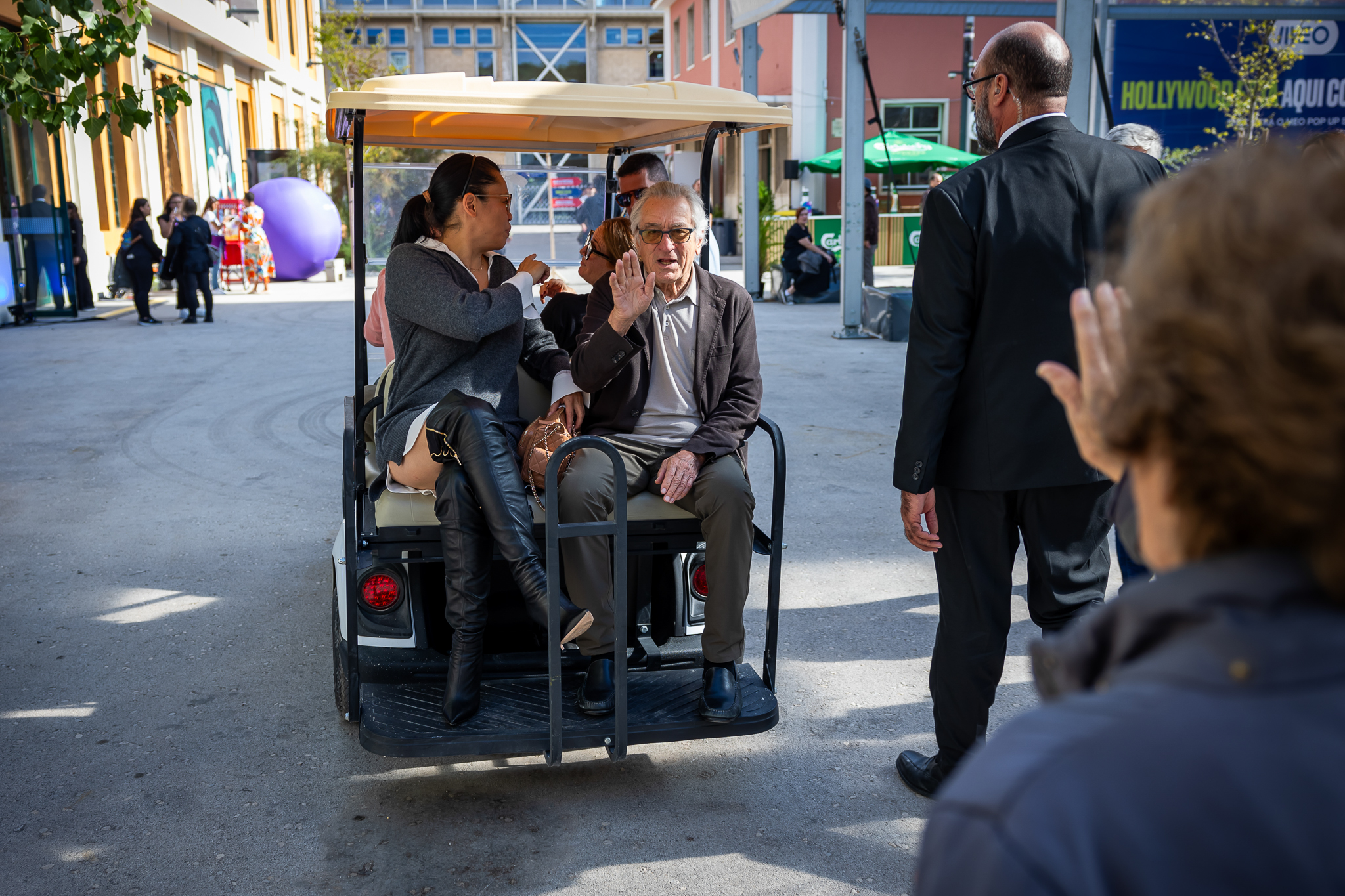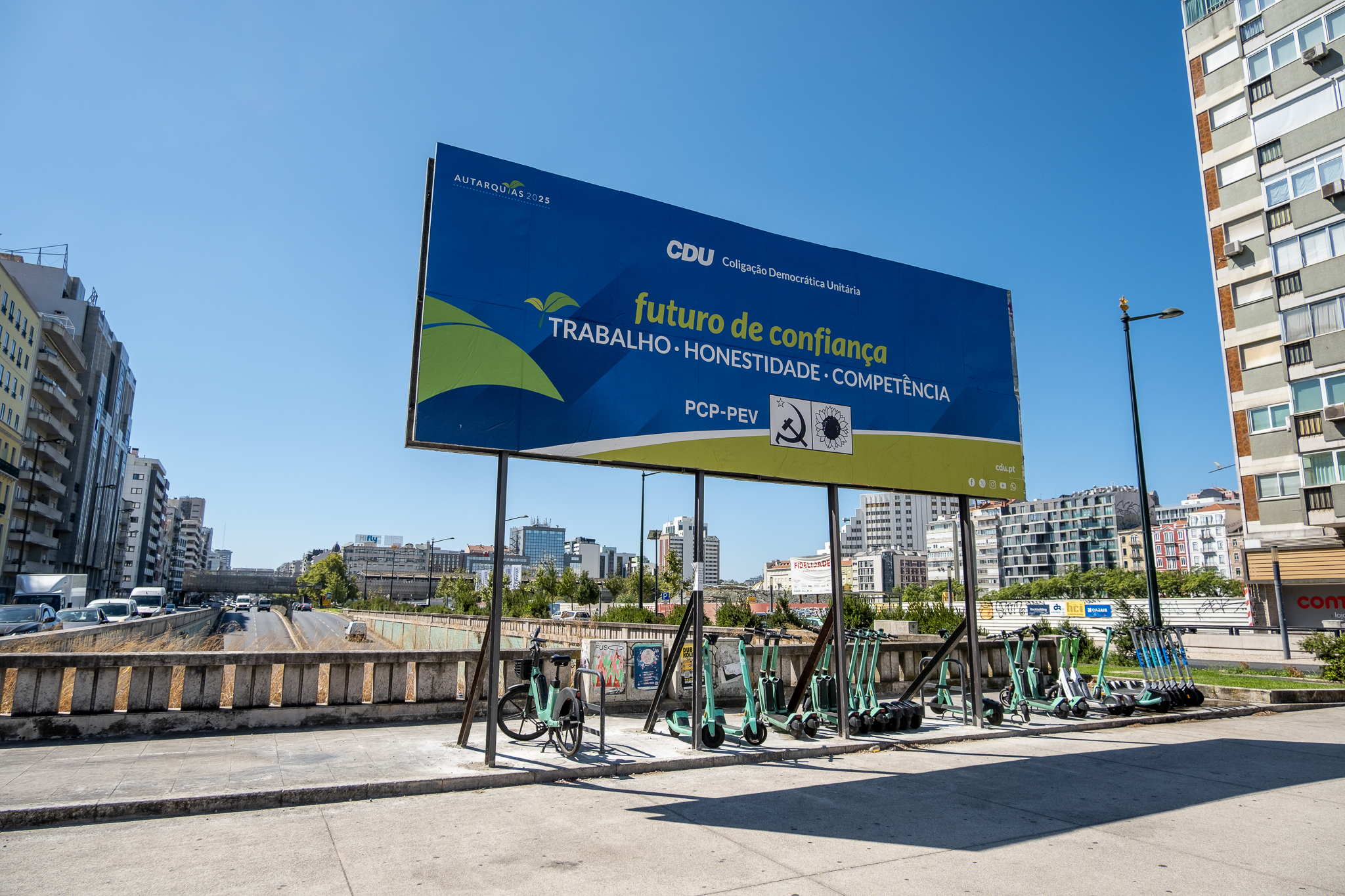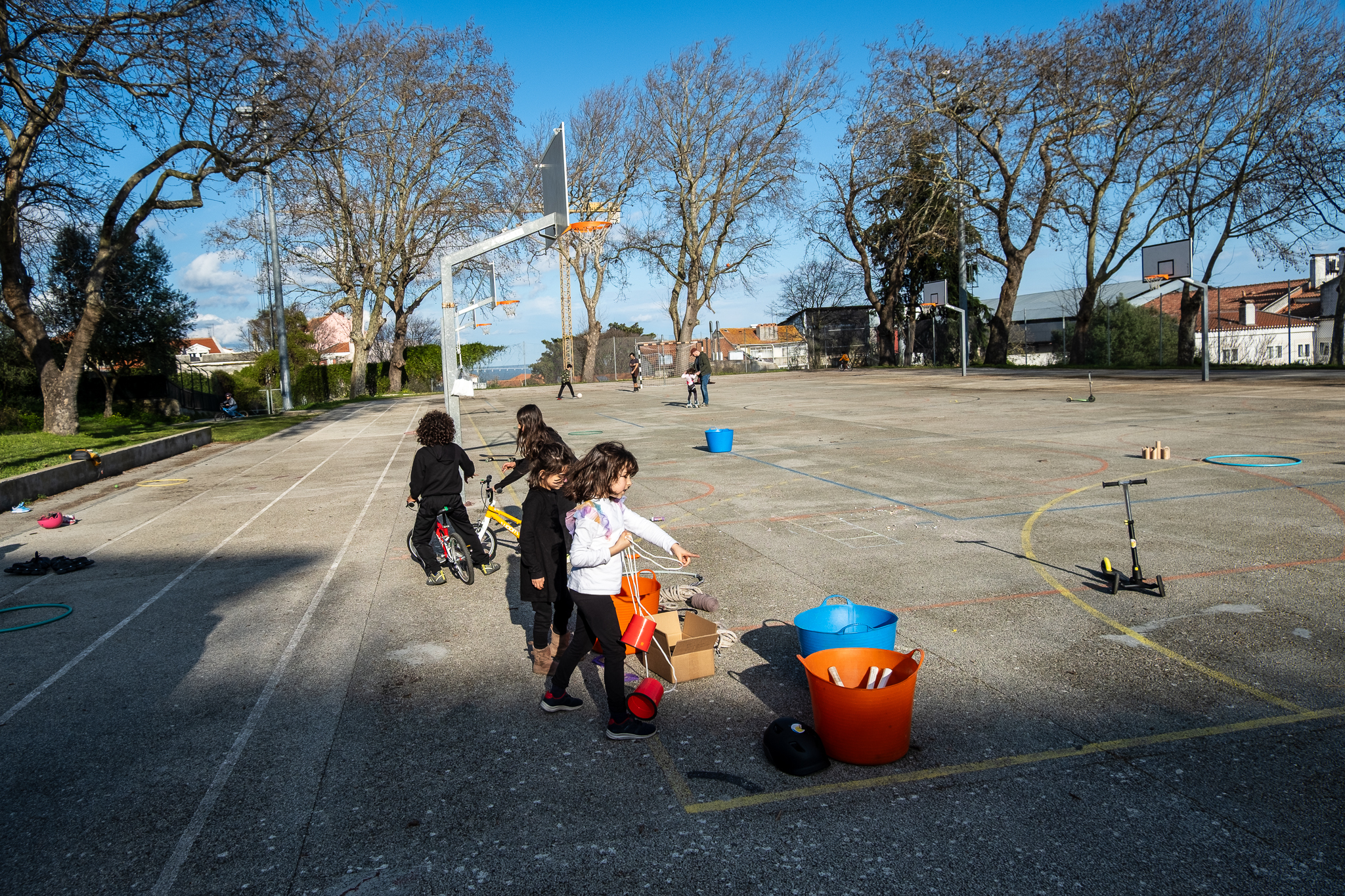"Transformations of public space that fall from the sky will always have a hard time being accepted and it's only natural that they generate opposition"says Pedro Sanches, from MUBi. Ciclovia da Almirante Reis has changed from a bidirectional configuration to a unidirectional typology. It's almost ready.

It was one of the issues that was at the center of the mayoral debate, and Carlos Moedas guaranteed in the campaign that the Almirante Reis bike lane would be completed. "is to end". But in the coalition program New Times to the parish of Arroios, is the promise of a "major intervention in Avenida Almirante Reis that supports a well-planned and better executed bicycle path"This may indicate that, rather than eliminating the cycle path, Moedas wants to upgrade that axis with better cycling infrastructure.
Now, the biggest question is whether, between one promise and another, the solution pop-up created by Medina's executive - and whose monetary investment remains unknown - will not be withdrawn until Moedas' final solution. What is certain is that the new configuration of the Almirante Reis cycle path, which crosses one of the city's most populous parishes and connects the lower and upper parts of the city, is being completedafter several months of work that began in mid-March. The only thing missing are the traffic lights in the Alameda area.
The history of the bike lane
A bike lane on Avenida Almirante Reis was not always planned, and it was even thought only between the Banco de Portugal block and Martim Moniz, passing through the contiguous Rua da Palma. In 2014, a bike lane on the Avenida Almirante Reis/Av. Guerra Junqueiro/Av. de Roma axis was planned. won the Participatory Budget then. In January 2020, the Lisbon City Council announced a bike lane on Avenida Almirante Reis as part of the project ZER ABC - which involved the partial elimination of cars from the historic city center. In June of the same year, he completed the same cycle path through a solution pop-up and with a bi-directional typology on the uphill side of the avenue - and not downhill, as was originally planned. The reason for the change was to make it easier for ambulances to access both São José Hospital and the city center. (It soon turned out that the cycle path could be used simultaneously, an emergency channel e both ambulances and fire department vehicles started using it to escape car trafficas was already the case in other cities).

The solution pop-up materialized at the end of June 2020 only needed a few days of work to be completed and appeared without prior notice to residents and traders in the area - apart from small niche event that the Lisbon City Council had made, earlier that month, to reveal your bike lane plan pop-up in response to the Covid-19 pandemic.
The Avenida Almirante Reis has thus gained a new cycle path between Martim Moniz Square and Chile SquareIt was to be extended, in September 2020, to the Areeiro traffic circle in the same two-way configuration. Cyclists hurry were grateful for the new infrastructurepainted red hearts on the floor, while in online groups of neighbors (and not only) questioned that intervention, the no prior notice and its public utility. After all, the bike lane had appeared overnight, creating an impact on one of the city's main and most dynamic avenues.
In November, heeding the harsh criticism, Lisbon City Council announced review the Almirante Reis bike path e implement a new configuration at the beginning of 2021: instead of a bidirectional section in one direction, a unidirectional typology was proposed in each direction. The works have started only at the end of MarchHowever, despite the attempt to reach a greater consensus between all parties (cyclists, motorists, residents and shopkeepers), the core Neighbors of Arroios - one of the most vocal opponents of the Almirante Reis bicycle lane - kept up his criticismHe reiterated his proposal to return to two lanes of traffic in each direction, with one of them having a 30 km/h limit and being shared with bicycles.

Construction of the new bike lane on Almirante Reis has been underway since March and, although the bike lane has generally been functional for many months, the work has not yet been completed (completion was scheduled for the beginning of the summer). First, the old cycle path was erased and the new one designed, section by section. In between, there was a changing the segregators initially selected, because they weren't compatible with some emergency vehicles - a Zicla model was chosen. It was decided to paint the entire cycle route, something that wasn't in the initial plans. Contrary to the project presented, islands were created with traffic lights and some changes were made to the avenue's road traffic to improve coexistence between everyone. Bus stops were relocated, and loading and unloading bays or quick stops were created along the axis. At the same time, Rua João das Regras, between Praça do Martim Moniz and Praça da Figueira, was renovated by the Santa Maria Maior Parish Council to give it a sidewalk and a definitive bike lane (the street had been pedestrianized under the program The Street Is Yours).
With the completion of this new configuration, the connection to Areeiro was dropped. Lisbon City Council opted to build the cycle path only between Martim Moniz (inclusive) and Alameda, connecting it to the Guerra Junqueiro infrastructure. To get to Areeiro, you'll have to go up this avenue, past Praça de Londres, then Avenida de Paris and take the new section of cycle path that goes along Avenida Afonso Costa to Olaias. The completion of the cycle path from Almirante Reis to Areeiro was withdrawn from plans to expand the cycling network of the municipality.
Creating the bike lane without dialog was a mistake, doing away with it would be another mistake
Pedro Sanches, from the board of MUBi, responsible for the Lisbon branch of the association that seeks to represent bicycle users, has no doubts: "The Almirante Reis cycle path and other projects came about without strategic planning. To end the bike path now would be to make exactly the same mistake of a haphazard, sudden and erratic execution. It's time we all thought about what we want for Lisbon in a formal planning process, with everyone's participation as its central element."
"Transformations of public space that fall from the sky will always have a hard time being accepted and it's only natural that they generate opposition"says the 38-year-old civil engineer. "But participating isn't about asking what people want, it's about starting a dialogue about the consequences and harms of car abuse, excessive speeds, children's autonomy and freedom, the health and safety of the elderly and the quality of life of all people."
"It's still difficult for traders to understand the benefits of active modes over parking or car circulation. Similarly, for residents, it's inconceivable that the space dedicated to circulation should be reduced because this will cause traffic, endless queues, pollution"says Pedro. For the head of MUBi, who has been using bicycles in Lisbon since 2010 and is the father of two girls who are transported to nursery school on two wheels every day, we can't talk inwardly, only to those who are becoming interested in the subject, and the language should be as broad as possible. "Phenomena such as traffic evaporation are only understood by those who devote part of their time to these causes, and are often not understood by ordinary people."

In the second configuration of the Almirante Reis cycle path, Lisbon City Council seems to have sought a more consensual design. The bi-directional bike lane was replaced by two one-way lanes, one in each direction of the avenue.with the exception of Praça do Martim Moniz and Rua João das Regras. It takes you from Praça da Figueira to Alameda via a fast and direct route that passes through several of the city's populous neighborhoods, such as Arroios and Anjos, and connects the lower part of the city to the central part, where there are many services, shops, schools and universities, and other populous residential neighborhoods.
Along the entire length of the avenue and the adjoining Rua da Palma, the cycle path runs along the central divider, an option taken due to the existence of streetcar tracks, subway exits and trees on the sides. The new unidirectional typology has made it possible to increase the space for cycling, with cyclists having more lanes in each direction than the 1.50 meters recommended in the municipality's Public Space Manual.
Car traffic also benefits from this configuration of the cycle corridor, since, although there is still one traffic lane going uphill and the two lanes going downhill have been reduced to one, the width available for general traffic is greater. As intended, this means that if a vehicle pulls over to the right, others can easily overtake it. With the changing the segregators Because of the model used, which is sturdy and has a low height, the cycle path can even be easily invaded if necessary, without compromising the safety of those who travel on it or the flow of cycle traffic. On several occasions, Lisboa Para Pessoas has witnessed vehicles going around a bus dropping off passengers, a garbage truck collecting bins or a vehicle stopped in the second row, carefully maneuvering to give priority to users of the cycle path.
On most of the avenue, the intersections are simpleThe traffic on the avenue is not allowed to turn left or right. There are some exceptions that have been resolved in good time with specific traffic lights, as was the case in the Mercado de Arroios area, or with the elimination of the authorization to turn, such as at the intersection with Rua José Falcão, near Praça do Chile (which in the future will be a traffic circle). Even so, it is advisable to drive with extra caution in this area, as there may still be drivers who are not used to the new dynamics of the avenue.

A more consensual cycle path?
Despite the readjustment made to the configuration of the bike lane, Pedro Sanches can't consider it to be consensual "due to gaps in the participation and involvement of civil society". The head of MUBi has no doubt that "it is essential that this axis includes safe solutions for active modes" and that, despite being "practically impossible to reach consensus on this issue"it is important to co-construct solutions, "where all parties can participate in order to reach a satisfactory solution where, a priori, someone, if not everyone, will have to give in part of their argument".
Pedro regrets "decades of ad hoc and opaque decisions" on the municipal side and the lack of a mobility plan for the city, which is built in a participatory and shared way beyond the council offices. "In addition, the Municipal Road Safety Plan, of which MUBi is a member of the advisory board, stopped being participated in 2019 and was never delivered. The Pedestrian Accessibility Plan was practically abandoned." MUBi had already suggested the creation of a Planning and Project Monitoring Committee for Active MobilityThis would enable it to work not only on the development of new infrastructures, but also on the "broken promises" by the municipality, such as correcting the mistakes of first-generation bike lanes and infrastructure, or creating and spreading 30 km/h zones in large areas of the city, as Pedro exemplifies.
"The argument that you can't bring everything up for public discussion, otherwise the processes will be interminable, doesn't hold water and can lead to these feelings of discontent and dissatisfaction." Citizens' Assemblies, one of Moedas' promisescan also be interesting tools from the civil engineer's perspective. It is necessary to "to show society and decision-makers that there are tools that can be used for involvement and participation in building solutions that are satisfactory for all parties" and that involving, instructing, educating and explaining facilitates the "people's acceptance" in relation to structural changes in city streets and neighborhoods.
Complicated beginnings and endings
The bike lane on Avenida Almirante Reis may not be perfect, but the current configuration nevertheless shows a willingness to generate consensus. By creating stop zones for loading and unloading and other purposes along the avenue, widening the traffic lanes and placing segregators to allow people to use the cycle path if they need to, it is possible to respond to both, without jeopardizing the existence of the cycle infrastructure or its safety. Between October 2019 and the same month in 2020, there was an increase of 140% in the use of the Almirante Reis axis by cyclistsaccording to data from counts carried out by the Instituto Superior Técnico.
"Looking at the current solution, the islets and segregators could bring a little more safety to users. But it's also important to realize that this can be a false perception of security“warns Pedro Sanches. "This reinforces the need to improve safety conditions when using the canals, either by improving the solution currently in place or by redefining and transforming the public space along the avenue."

The most critical parts of the Almirante Reis cycle path are at its two ends. On the one hand, at Praça do Martim Moniz, the rubber bollards provided for in the project have been replaced by Zicla bollards placed along the length of the avenue. There have already been reports of undue parking on the cycle path, although Lisboa Para Pessoas has noted a general respect for cycling space. On the other hand, the existing cycle crossings in Martim Moniz can make some users uncomfortable and dependent on the attention of drivers: on the Rua da Palma side, cyclists need to make sure they are seen and, on the Rua João das Regras side, the crossing is very long and sometimes unsightly due to the streetcar.
Speaking of Rua João das Regras, although it is entirely pedestrianized, the terraces end up taking up a large part of the paved space, which is why many pedestrians prefer the cycle path, which also offers a smoother surface. It is planned that this street, despite having a segregated cycle path, will become another space for coexistence.

Already in the Alameda area, the connection with Avenida Guerra Junqueiro is made with a GIRA station in the middle, forcing cyclists to go around itIt's a good idea to take into account the people who are using that station or who are walking through that area. There are two cycle crossings here: one to go from the one-way cycle lanes located on the Almirante Reis central reservation to the Alameda promenade and another to get from here to Avenida Guerra Junqueiro. These two crossings will be signalized and, in the case of the one on Guerra Junqueiro, there will be reinforced traffic lights for drivers. (The traffic lights on Alameda are still being installed and were switched off at the time of writing).
But, concludes Pedro Sanches, "the important thing at this stage will be to be consistent and not to take several steps backwards in the mobility of this axis, just on a whim, removing an infrastructure that, to all intents and purposes, has seen a substantial increase in use, to leave bicycle users once again at the mercy of road danger".





